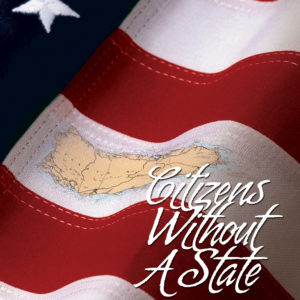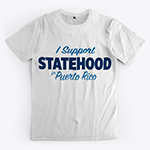The Indiana Daily Student published an editorial calling for “full rights” for United States territories. On the surface, this is the obvious American way: equality for all citizens. What could be more clearly the right decision for America?
The article reminds us that the United States was once, for a brief time, an imperial power. The U.S. might have started out as a scrappy start up of a nation, a couple of handfuls of states banding together to stand up to European rule. But America pretty quickly got the idea that she could be an empire like the European empires. Fearing that countries like England and Spain would take over the open spaces on the North American continent and perhaps get back their rule over the states, the U.S. took on all the land of the Continental United States and then started looking around for more places to take over.
Author Kyle Linder sees lasting problems caused by this chapter in our history, and sees only one solution:
Today, 3.6 million tax-paying Americans are without the right to vote, lack meaningful representation in Congress and receive little recognition from their government or compatriots. These American citizens constitute the United States’ far-reaching overseas territories, namely Puerto Rico, Guam, American Samoa, the U.S. Virgin Islands and the Northern Mariana Islands.
It is unconscionable that the U.S. maintains these territories as relics of its own imperialism and actively treats their inhabitants as second-class citizens. All U.S. territories must be granted either independence or statehood, in accordance with the desires of the territory. To do otherwise is to continue to betray America’s founding principles of equality and justice for all.
Linder wants statehood or independence for all the current U.S. territories.
3.6 million Americans?
There are, as Linder points out, roughly 3.6 million U.S. citizens living in all the territories combined. But roughly 3.2 million of them live in Puerto Rico.
Puerto Rico is clearly large enough to be a state. American Samoa and the Northern Mariana Islands both have fewer than 60,000 people, the required number for a state according to the Northwest Ordinance. Guam is large enough to meet the 18th century criteria of the Northwest Ordinance, but has just about 165,000 residents, compared with the smallest state, Wyoming, which has 577,737. The US Virgin Islands have just about 107,000. Are the smaller territories large enough to be successful as states?
Are they large enough to be successful as independent nations?
More importantly, only Puerto Rico has requested statehood. If the smaller territories are not yet ready to be states, must they be cast adrift and forced to be independent countries?
What rights are lacking?
Linder does not, in this article, consider whether such small territories can be successful as sovereign states or nations. He does point out one of the big problems with being a territory:
With the exception of American Samoa, those born in territories are granted U.S. citizenship. In direct contradiction to the 14th Amendment, however, they cannot vote in presidential elections, are each only allowed one non-voting member in the House of Representatives and completely lack any representation in the Senate.
Meanwhile, Wyoming, Vermont, Alaska and North Dakota elect eight senators altogether, despite having a combined population of half a million less than Puerto Rico’s. Aside from Vermont, each of these states claimed territorial status at one point in their history as well.
He also notes the difference between disaster responses in territories and in states:
Compared to the work done in Florida and Texas, also affected by the hurricanes, recovery in the territories has been slow and relatively ineffectual. It took Congress nearly two years after the hurricanes to release federal aid to the islands. Additionally, the Federal Emergency Management Agency has funded only 190 projects in Puerto Rico and 218 in the U.S. Virgin Islands, while allocating funds for 3,700 projects in both Florida and Texas.
It is difficult to view these policies as anything but a belief that the government has no obligation to the welfare of its territorial citizens; rather, it acts as though the territories are privileged to receive any assistance from their benevolent occupiers.
These differences are evident every day in the territories, not only during disasters. Puerto Rico gets far less support in Medicaid, for example, than states with similar populations. Residents of Puerto Rico are not eligible for the same tax credits people in states can receive — even if they don’t pay federal income tax. It is legal under the U.S. Constitution for Congress to treat territories differently from states.
Puerto Rico wants statehood
Unlike the other territories, Puerto Rico has voted twice for statehood. Puerto Rico has a larger population than 21 of the current 50 states, and has a constitution which has already been approved by Congress. Independence has received no more than 5% of the vote in any status vote. Puerto Rico voters have never elected an Independence Party governor. There is no reason to think that Puerto Rico wants independence.
Puerto Rico should have statehood. Perhaps once Puerto Rico is a state, the other remaining U.S. territories will want statehood, too. If so, they should have it.
One thing is certain: it is time for Puerto Rico to become the 51st state. Tell your legislators this truth. They need to hear it.








2 Responses
“Guam … has just about 165,000 residents, compared with the smallest state, Rhode Island, which has over one million.”
You should really compare Guam with the smallest state by population, Wyoming, which has around 578,000 residents as of 2018. Your point still stands, but it’s misleading to compare to Rhode Island, the smallest state by area only.
Thank you for pointing out this error. We have corrected the story.